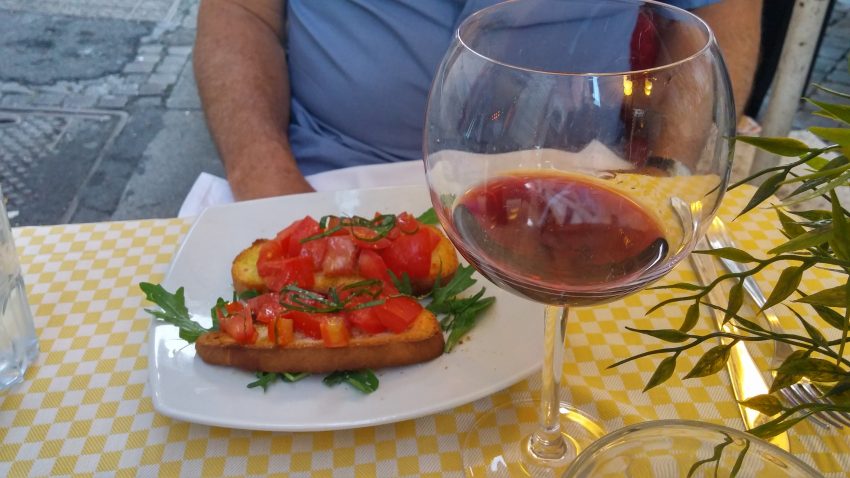We love to eat. Ken is far more adventuresome than I am but I’m still willing to try most exotic local cuisines. Taste, smell, texture and presentation are all important components of any meal, and a well-trained chef can make even the simplest of ingredients into a great experience.
presentation are all important components of any meal, and a well-trained chef can make even the simplest of ingredients into a great experience.
When we travel we try to eat local, fresh, and whatever is in season. We focus on the type of food the locals eat and frequent the restaurants where they eat. A small neighbourhood bistro can be more intimate, cheaper and have better food than the touristy hot spots. And we always order the local specialty. It may seem cliché, but it sure is fun.
If someone visits Canada for the first time I would definitely recommend they try poutine, and anything cooked in or with maple syrup. When I go to other countries I want to know what they are most proud of. We tried haggis in Scotland, ate fish & chips and steak and ale pie in Britain, souvlaki in Greece and every imaginable type of pasta in Rome. We also ate seafood, everywhere. One of the best parts of cruise ports is they usually have an abundance of fresh fish and seafood available.
 Ordering in a restaurant can be more of a challenge if language is an issue. Neighbourhood restaurants usually don’t publish menus in English, if they have menus at all. At a sidewalk café in Naples we asked for a menu and the waiter carried over the chalkboard for us to see. It was written in Italian. One of the main reasons we carry a tablet with Google Translate is to help interpret menus.
Ordering in a restaurant can be more of a challenge if language is an issue. Neighbourhood restaurants usually don’t publish menus in English, if they have menus at all. At a sidewalk café in Naples we asked for a menu and the waiter carried over the chalkboard for us to see. It was written in Italian. One of the main reasons we carry a tablet with Google Translate is to help interpret menus.
It can be expensive eating out during your vacation but there are ways to control the cost without giving up the experience. Attend local markets to put together items for a picnic or a late night supper in your hotel room. Buy lunch at a deli or food truck. The best salmon I ever had was from a stand in a local market in  Helsinki. Lunch is usually cheaper than dinner and often served faster if time is limited. Try tapas from a bar in Spain instead of sitting down for a full meal. Pick up croissants from the bakery next door for breakfast in your room, and make your own coffee.
Helsinki. Lunch is usually cheaper than dinner and often served faster if time is limited. Try tapas from a bar in Spain instead of sitting down for a full meal. Pick up croissants from the bakery next door for breakfast in your room, and make your own coffee.
No matter how each day plays out always splurge for one decedent meal while travelling. Get into the rhythm of dining out local style; eating later, slower service, more attention to each course and ask for recommendations for wine pairings.
Be sure to check if the tip is included in your bill. This catches many tourists by surprise and they end up double tipping. There is no reason why you shouldn’t top up for exceptional service, just do so knowingly.
 We are not picky eaters by any stretch of the imagination and we don’t have any allergies or medical dietary restrictions. This may limit others from eating locally or trying new things. One of the benefits of a cruise is that you do have many food choices on the ship so you don’t have to risk eating at a restaurant where the ingredients or process may be suspect. If you are staying somewhere for an extended period of time look into booking rooms with kitchen facilities so you can buy the ingredients and prepare yourself.
We are not picky eaters by any stretch of the imagination and we don’t have any allergies or medical dietary restrictions. This may limit others from eating locally or trying new things. One of the benefits of a cruise is that you do have many food choices on the ship so you don’t have to risk eating at a restaurant where the ingredients or process may be suspect. If you are staying somewhere for an extended period of time look into booking rooms with kitchen facilities so you can buy the ingredients and prepare yourself.
Most importantly, dieting is not allowed while on vacation.
Bon appetit!!
